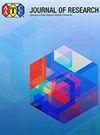Valorization of Solid Wastes from Textile Industry as an Adsorbent Through Activated Carbon Production
IF 1.2
4区 工程技术
Q4 MATERIALS SCIENCE, TEXTILES
引用次数: 0
Abstract
In this study, recycling of solid textile wastes into activated carbon and the potential use of these activated carbons in color removal were investigated. Cotton and cotton/polyester-blended fabric wastes and textile wastewater treatment sludge were selected as solid textile wastes. A two-stage method, low temperature carbonization, and chemical activation with ZnCl2 were applied to prepare large surface area and rich-pore structure activated carbon from fabric wastes and sludge in textile industry. The activated carbons were characterized by elemental analysis, Fourier-transform infrared spectroscopy, X-ray fluorescent, and Brunauer–Emmett–Teller analysis. The reactive dye (Reactive Red 141) adsorption capacity of the activated carbons was investigated by the batch adsorption method. Activated carbon yields were found in the range of 28–34%. Cotton textile waste-based activated carbons were found to have the highest surface area (~1380 m2/g), followed by cotton/polyester and wastewater treatment sludge-based activated carbons. Wastewater treatment sludge-based activated carbons showed the highest dye adsorption capacity (161.29 mg/g), possibly due to its higher mesoporosity. The obtained results showed that the adsorption of the reactive dye onto textile waste-based activated carbons produced by two-step process is favorable. The developed activated carbons fit the circular economy approach well, offering a promising potential for solid textile waste management, as well as for water remediation.以活性炭为吸附剂处理纺织工业固体废物的研究
本研究探讨了纺织固体废弃物回收制备活性炭及其在脱色中的潜在应用。以棉、棉/涤混纺织物废弃物和纺织废水处理污泥为研究对象,研究了固体纺织废弃物。采用低温炭化和氯化锌化学活化两阶段法制备了大表面积、富孔结构的纺织废布和污泥活性炭。采用元素分析、傅里叶变换红外光谱、x射线荧光和布鲁诺尔-埃米特-泰勒分析对活性炭进行了表征。采用间歇吸附法考察了活性炭对活性染料(活性红141)的吸附能力。活性炭得率在28 ~ 34%之间。棉纺织废渣基活性炭的比表面积最高(~1380 m2/g),其次是棉/聚酯和废水处理污泥基活性炭。污泥基活性炭对染料的吸附能力最高(161.29 mg/g),这可能是由于其介孔率较高所致。结果表明,两步法生产的活性染料在纺织废渣活性炭上的吸附效果良好。所开发的活性炭非常适合循环经济方法,为固体纺织废物管理和水修复提供了广阔的潜力。
本文章由计算机程序翻译,如有差异,请以英文原文为准。
求助全文
约1分钟内获得全文
求助全文
来源期刊

AATCC Journal of Research
MATERIALS SCIENCE, TEXTILES-
CiteScore
1.30
自引率
0.00%
发文量
34
期刊介绍:
AATCC Journal of Research. This textile research journal has a broad scope: from advanced materials, fibers, and textile and polymer chemistry, to color science, apparel design, and sustainability.
Now indexed by Science Citation Index Extended (SCIE) and discoverable in the Clarivate Analytics Web of Science Core Collection! The Journal’s impact factor is available in Journal Citation Reports.
 求助内容:
求助内容: 应助结果提醒方式:
应助结果提醒方式:


